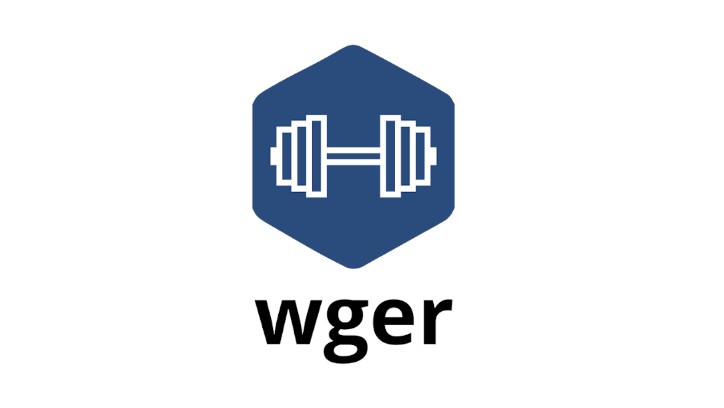
wger
wger (ˈvɛɡɐ) Workout Manager is a free, open source web application that help you manage your personal workouts, weight and diet plans and can also be used as a simple gym management utility. It offers a REST API as well, for easy integration with other projects and tools.

Mobile app

Installation
These are the basic steps to install and run the application locally on a Linux
system. There are more detailed instructions, other deployment options as well
as an administration guide available at https://wger.readthedocs.io or locally
in your code repository in the docs folder.
Please consult the commands’ help for further information and available
parameters.
Production
If you want to host your own instance, take a look at the provided docker
compose file. This config will persist your database and uploaded images:
https://github.com/wger-project/docker
Demo
If you just want to try it out:
docker run -ti --name wger.apache --publish 8000:80 wger/apache
Then just open http://localhost:8000 and log in as admin, password adminadmin
Please note that this image will overwrite your data when you pull a new version,
it is only intended as an easy to setup demo
Development version
Docker
We provide a docker compose file that sets everything up for development and
persists the database on a volume. From the root folder just call
docker-compose -f extras/docker/compose/docker-compose.yml up
For more info, check the README in wger/extras/docker/compose.
Local installation (git)
Note: You can safely install from master, it is almost always in a usable
and stable state.
Install the necessary packages
sudo apt-get install python3-dev nodejs npm git
sudo npm install -g yarn sass
Make a virtualenv where we will install the python packages
python3 -m venv venv-wger
source venv-wger/bin/activate
Start the application. This will download the required JS and CSS libraries
and create a SQlite database and populate it with data on the first run. If
you want to use another database, edit the settings.py file before calling
bootstrap. You will need to create the database and user yourself.
git clone https://github.com/wger-project/wger.git
cd wger
pip install -r requirements.txt
python3 setup.py develop
wger create-settings
wger bootstrap
wger load-online-fixtures
python3 manage.py runserver
Log in as: admin, password adminadmin
After the first run you just start django’s development server::
python manage.py runserver
Command line options
You can get a list of all available commands by calling wger without any
arguments:
bootstrapPerforms all steps necessary to bootstrap the applicationconfig-locationReturns the default location for the settings file
and the data folder
create-or-reset-adminCreates an admin user or resets the password
for an existing one
create-settingsCreates a local settings fileload-fixturesLoads all fixturesmigrate-dbRun all database migrationsstartStart the application using django’s built in webserver
To get help on a specific command: wger <command> --help.